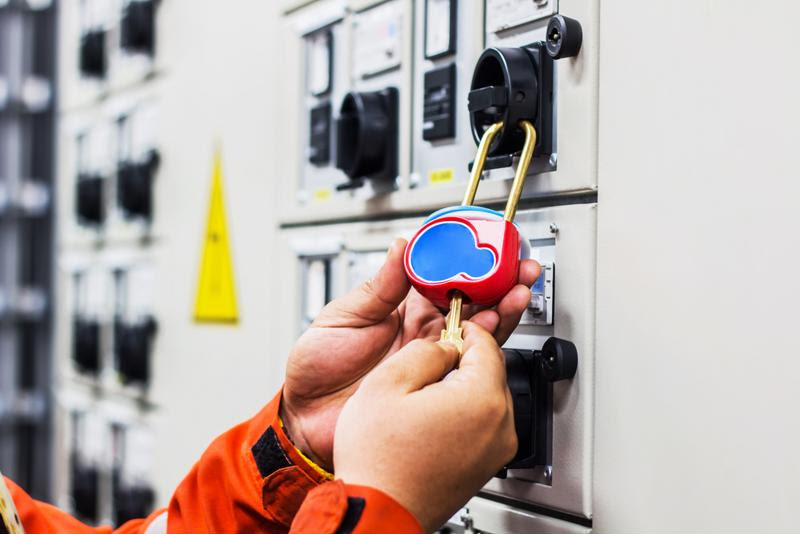Stay Safe and Compliant with Video-Based Lockout/Tagout Training

Lockout/tagout procedures are essential parts of safety planning at any workplace involving powered machinery

Working on heavy machinery is risky without proper training.
The rules around lockout/tagout come from the Occupational Safety and Health Administration, and they apply to a huge selection of equipment. OSHA noted millions of workers service machinery as part of their everyday duties. While electricians, machine operators, craft workers and general laborers are some of the most common positions dealing with lockout/tagout needs, many more employees also have to comply with the regulations.
It’s important to invest in training solutions that will familiarize all relevant personnel with their responsibilities under the law. Providing proper education is one of OSHA’s requirements for organizational leaders, alongside ensuring appropriate equipment and policies are in place on the shop floor.
What Do Employees Need to Know?
While some of the requirements around lockout/tagout procedures apply directly to company leadership, a significant part of OSHA’s rules are dedicated to training workers and making them aware of proper procedures. Unless employees know exactly how to handle potentially hazardous equipment, they are at constant risk of suffering injuries on the job. The educational requirements for workers vary depending on how much exposure those individuals have to the assets in question.
For example, if your company uses machinery that has its energy controlled during service and maintenance, all employees who work near the equipment must understand the shutdown procedures and know not to reactivate the assets if they are locked out or tagged out. One individual who doesn’t understand the purpose of a lockout/tagout strategy could undermine the whole system by unknowingly turning a machine back on when it is supposed to be shut down.
The employees who actually perform the maintenance on the machinery, as well as locking out or tagging out the equipment, need more in-depth training. OSHA requires that these personnel must be able to recognize hazards caused by the equipment they’re working on. There are many types of powered equipment present in a typical workplace, from mechanical devices to electrical components and more. Well-trained employees will be able to notice and classify potential hazards, and understand when and how to neutralize these threats.
The procedures used to keep workers safe will depend on the equipment in question. Assets that can’t be locked out and prevented from activating are subject to tagout processes to ideally keep workers out of harm’s way. Where tagout is allowed in place of lockout, employees should be aware of the involved practices and operations — this specialized knowledge could be life-saving.
OSHA’s regulations emphasize how training isn’t just a one-time occurrence for employees. It’s possible for practices in the workplace to change over time, with new equipment or differing control methods adding complexities to energy safety. In cases when these differences arise, it’s up to you, as a company leader, to retrain the affected workers and get them up to speed on the latest configurations. OSHA also demands employee proficiency remain high – whether or not anything has shifted on the shop floor, you must ensure your team’s knowledge is current and comprehensive.
 Lockout/tagout best practices can save lives.
Lockout/tagout best practices can save lives.What Types of Lockout/Tagout Training Courses Are Available?
Getting everyone on the same page regarding lockout/tagout practices isn’t difficult when you have access to a modern training content network. The following are just a few of the video-based offerings to help keep your team in the know.
- Lockout/Tagout Refresher for Employees: When you need to keep your team up to date on lockout/tagout procedures, this course can help. Rather than starting from scratch, it reviews knowledge workers already have. There is a related course for supervisors, reminding team leaders how to keep their employees safe on the job.
- Lockout/Tagout: It Would Have Saved His Life: While there are many frightening statistics around the risks of unguarded machinery, sometimes an isolated story serves as the best way to convey the importance of proper safety practices. By taking employees through a tragic example of a machine operator’s death on the job, this course makes the stakes of lockout/tagout clear.
- Lockout/Tagout: To The Point: This course offers a “to the point” look at lockout/tagout procedures. This course helps all employees understand their role in the lockout/tagout process and the safe work practices to follow to prevent injuries and accidents.
Finding the right courses for your company’s needs is a matter of matching your workplace and machinery type to the educational materials available. The one thing you can’t do is neglect to prepare your workers to handle machinery safely. For purposes of both OSHA compliance and personal safety, training is essential.
Source